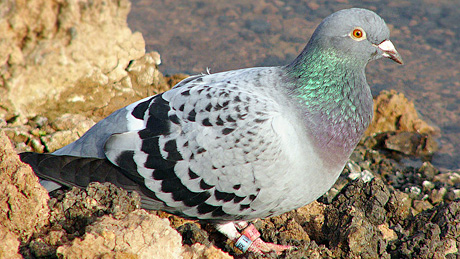Navigation auf uzh.ch
Navigation auf uzh.ch

Carrier pigeons released from an unfamiliar location will find their way home. To navigate they use the earth’s magnetism, the stars and the position of the sun. But that’s not all, as a study just published in the Journal of Experimental Biology demonstrates. In this study, Hans-Peter Lipp, professor emeritus of anatomy at the University of Zurich, and his doctoral candidate Nicole Blaser collaborate with other researchers to show that pigeons can also sense the strength of the earth’s gravitational pull.
Gravitation varies according to the altitude above sea level and the earth’s substrate. Pigeons have a kind of gyroscope, a measuring instrument used in navigation, that allows them to perceive the difference between the gravitation at the place they were released and at their loft. This enables them to work out the direction home.
The researchers did an experiment to show that gravitation really does play a key role in pigeon’s ability to navigate. They fitted 26 pigeons with a GPS tracker and had them fly over a meteorite crater in Ukraine. The crater, 25 kilometers wide, has unusually low gravity.
This threw the pigeons’ navigation system into disarray. Compared with a control group of birds released further away from the crater, an above-average number of pigeons had problems finding their way home across it.
Now Hans-Peter Lipp wants to investigate the cellular mechanisms that enable pigeons to detect the tiniest gravitational anomalies.